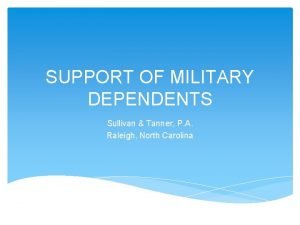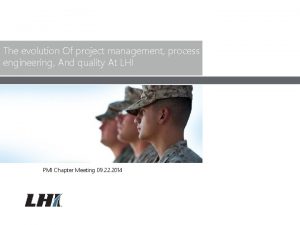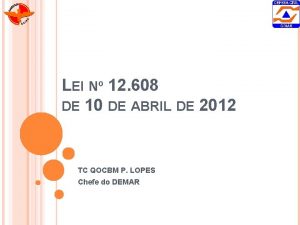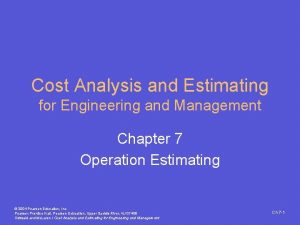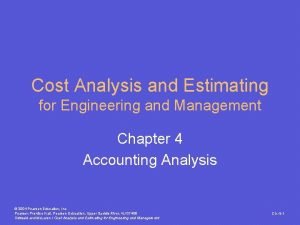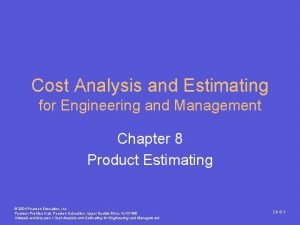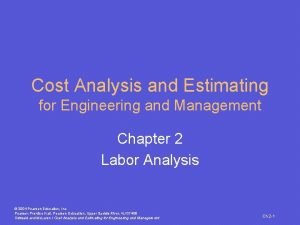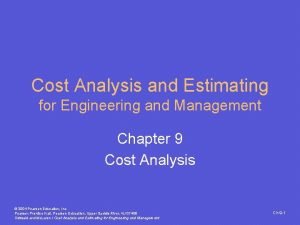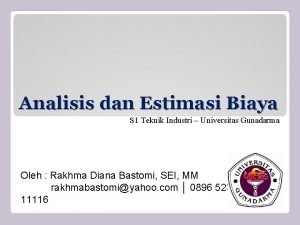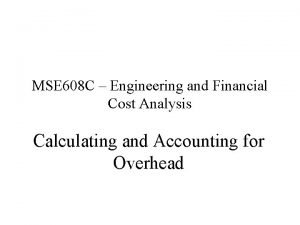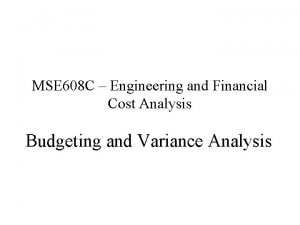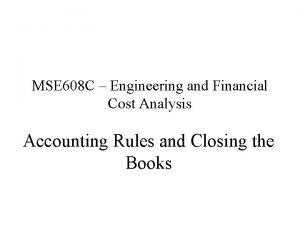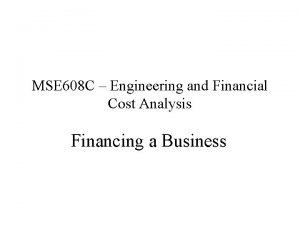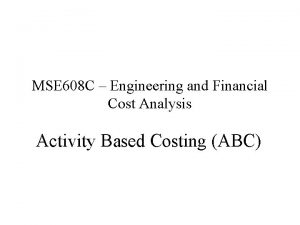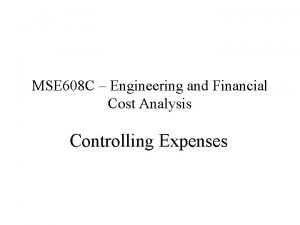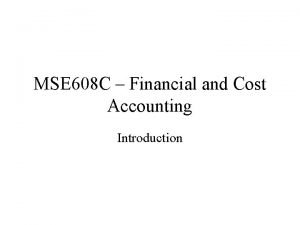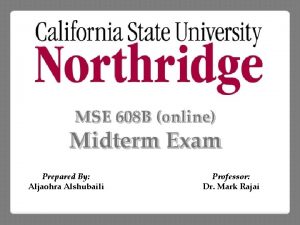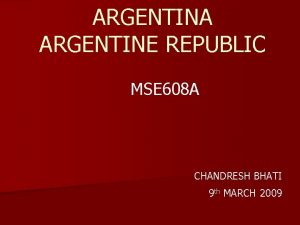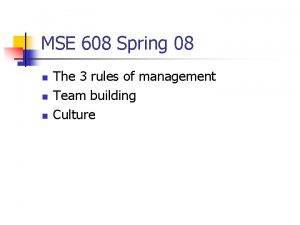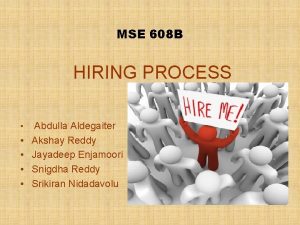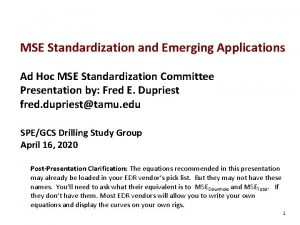MSE 608 C Engineering and Financial Cost Analysis



















- Slides: 19

MSE 608 C – Engineering and Financial Cost Analysis Introduction to Cost Accounting

Cost Accounting Techniques that develop detailed information about the cost of products or services. • Internal (Managerial Accounting) for – budgeting, – variance analysis and making a – variety of business decisions. • External (Financial Statements). – Income Statement • “Cost of Goods Sold” for Manufacturing operations • “Purchases” for Merchandising and Service organizations – Balance Sheet • Inventory

A Historical Perspective • Pre-Industrial Revolution – Luca Pacioli developed cost accounting techniques for cash budgeting and variance analysis. – Most manufacturing was performed by craftsman who were paid piece-rate; – Minimal manufacturing overhead compared to labor and materials

A Historical Perspective (cont) • 19 th Century Post-Industrial Revolution – More capital investment and higher overhead, primarily in process industries; – Throughout the 1800 s there were no well-defined cost accounting systems. – Development of absorption and variable accounting methods to allocate fixed costs. – Alexander Hamilton Church developed the machine-hour method for allocating fixed costs (land, building, equipment).

An Historical Perspective (cont) • Early 20 th Century – Increased capital investment in assembly industries. – Variable costing method grew in acceptance but was still less commonly used than the Absorption costing method.

An Historical Perspective (cont) • End of 20 th Century – Congress established the Cost Accounting Standards Board in 1970 to standardize methods and reporting for defense contractors. – President Reagan eliminated the CASB in 1982. – Development of Activity-Based Costing (ABC) method.

How Are Costs Classified? ? ? • There are two methods used by the Cost Accountant to apply costs consistently: – Manufacturing or Non-manufacturing Costs • This distinction determines if costs are associated with product or services or with support functions. – Period or Product Costs • This distinction used to determine when costs are expensed.

Manufacturing Costs • Manufacturing is the conversion of materials into finished goods. • It requires: – Direct Labor – Direct Material – Overhead

Direct Labor • Wages and other payroll costs that can be directly associated with a unit of output. – Commonly called “Touch Labor” • Indirect Labor cannot be directly traced or cost-effectively associated with the product (included in Overhead).

Direct Material • All raw materials added during the conversion process – become an integral part of the finished goods. • Indirect Material – difficult to determine the amount of some raw materials that are consumed during the conversion process for a specific product (included in Overhead) • Prime Costs = Direct Material + Direct Labor

Overhead • All other factory costs required for production but are not directly associated with each unit of production. – Indirect Labor – Indirect Material – Overhead

Non-Manufacturing Costs • Marketing and selling costs: – Required to get finished goods to customers. • Administrative costs: – Required to provide the administrative function of the business.

Product and Period Costs Emphasize the timing of expenses. • Product Costs – Costs that can be directly “attached” with Product and will be expensed when the product is sold (not necessarily the period they were incurred). • Period Costs – Costs not easily “attached” to product and will be expensed in the period in which they were incurred.

Collecting Costs • Job Order – Production of individual or batches of many different types of products. – Costs can be collected for independent orders. • Process – Continuous processing of a single type of product for relatively long periods of time. – Costs can not be cost-efficiently collected for independent orders.

Job Order Costing • Costs for independent orders are charged to a Work Order, or Job number. – Direct Labor • Charged to the work order number using a time card, production traveler (a. k. a. router), or other type of time sheet. – Direct Material • Purchased directly to the Work Order number or will be issued from general inventory and charged to the job. – Applied Overhead • The Cost Accountant will determine the amount of factory overhead costs to apply to each Work Order; usually based on the amount of labor hours, labor-wages, machine-hours or material costs.

Process Costing Steps for determining Process costs: 1) Identify the Processing Centers • the processing activity is consistent for all the product; and • the output is homogeneous. 2) Accumulated labor, material and overhead costs for each Processing Center over a specific time period 3) Calculate the average cost per unit over that period of time. Average unit cost = Total Costs/Number of units output

Actual vs. Standard Costs • Actual Costs – The actual costs paid for resources used in the conversion processes. • Evidenced by transaction documents. • Standard Costs – Predetermined costs assigned for each unit of a resource used in the conversion processes. • Standards are established by: – Time studies; – Historical data; and – Educated guesswork. • Standards are based on past results but must consider future events.

Actual vs. Standard Costs (cont) Both systems have advantages and disadvantages. Advantages Disadvantages Actual Costs • More accurate • Costs must be available when inventory is sold • Raw materials may have different cost in inventory. Standard Costs • Provides a vehicle for future planning and variance analysis. • Less record keeping • Does not consider raw materials with different costs. • Handy costing information for planning and decision making. • The cost to prepare Standards Standard Costing is the predominate system in business.

Assessment • What determines Manufacturing vs. Nonmanufacturing Costs? • What goes into Manufacturing Overhead? • What is the difference in using Product versus Period Cost designation? • What are the two ways to collect Costs?
 Army bah regulation 608 99
Army bah regulation 608 99 Process mining
Process mining Lei 12 608
Lei 12 608 Mse total cost
Mse total cost Cost analysis and estimating for engineering and management
Cost analysis and estimating for engineering and management Cost analysis and estimating for engineering and management
Cost analysis and estimating for engineering and management Cost analysis and estimating for engineering and management
Cost analysis and estimating for engineering and management Cost analysis and estimating for engineering and management
Cost analysis and estimating for engineering and management Cost analysis and estimating for engineering and management
Cost analysis and estimating for engineering and management Cost structure refers to the relative proportion of
Cost structure refers to the relative proportion of Analisis estimasi biaya
Analisis estimasi biaya Cost accumulation and cost assignment
Cost accumulation and cost assignment Cost accumulation and cost assignment
Cost accumulation and cost assignment Cost pools
Cost pools What is a period cost on the income statement
What is a period cost on the income statement Dennis geyer
Dennis geyer Objectives of standard costing
Objectives of standard costing Distinguish between average cost and marginal cost
Distinguish between average cost and marginal cost Cost control and cost reduction difference
Cost control and cost reduction difference Job order costing
Job order costing
